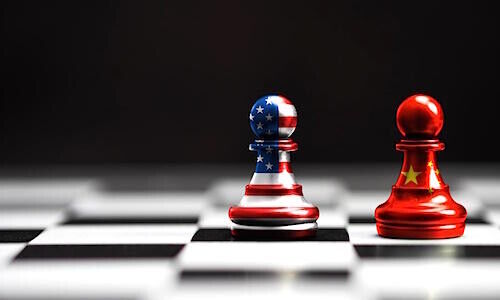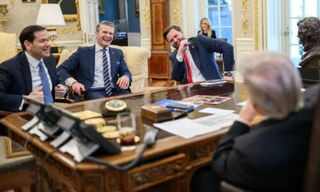How Will Renewed US-China Trade Tensions Play Out?
Over the weekend, US President Donald Trump fired fresh tariff threats against China which subsequently retaliated with port fees. How will these renewed tensions develop and what will be the impact on markets?
Last Friday, US President Donald Trump announced fresh measures, including a new 100 percent tariff on all imports from China and export controls on «critical software», effective November 1. He cited «large scale export controls» imposed by China, including on rare earths, as the reason and threatened to cancel a planned meeting with President Xi Jinping at the end of the month. China retaliated with new port fees on US-owned, operated or flagged vessels, effective October 14.
By Sunday, rhetoric quickly softened with both the US and China signalling that they were open to a deal. Trump wrote on social media not to worry and that the US «wants to help China, not hurt it». The Chinese Ministry of Commerce said «we do not want a tariff war, but we are not afraid of one».
Negotiation Tactics
The consensus call across banks is that this is yet another display of negotiation tactics before the extension of the current tariff truce beyond the November 10 deadline.
According to a Bank of Singapore note by China equity strategist Louisa Fok, there is a 45-55 percent probability that the current bout is sabre rattling with the Trump-Xi meeting to take place as planned and both countries partially roll back their respective tech and rare earth curbs.
Nannette Hechler-Fayd’herbe, Lombard Odier’s head of investment strategy, sustainability and research, CIO EMEA, said in a separate note that a compromise is expected to be reached by December 1, but additional US tariffs on Chinese goods will be applied for several weeks, causing some temporary shortages.
US and China Market Pullback
Nonetheless, many expect the current situation to trigger a pause in markets. According to Standard Chartered, investor positioning was already at a bullish extreme and valuations were stretched, leading the renewed trade tensions to be a catalyst for a pullback. The bank advises investors to add US and China equities in tranches with a tilt towards defensive growth such as US healthcare and China high-dividend non-bank H-shares. It sees support for the S&P 500 at 6,250 and 5,900, where investors can consider adding exposure.
Julius Baer echoes the sentiments, expecting Chinese stocks with high US exposure to underperform and those that have gained the most in the recent rally to face the largest pressure. However, the bank believes that broader positive outlook for China remains intact.
«The renewed trade tensions between China and the US is a perfect excuse for profit taking. That said, we see signs that both sides still want to re-engage. We expect the two nations will avoid a full-blown trade war and the near-term correction should not derail the longer-term uptrend of the Chinese market,» said Richard Tang, Julius Baer's China strategist and head of research Hong Kong. «Besides trade development, investors will also focus on the Fourth Plenum scheduled on 20-23 October where the 15th Five-Year Plan will be revealed.»



























